AMD Radeon RX 7900 Series Deep Dive
Today, AMD takes the wraps off its upcoming Radeon RX 7900 XTX and Radeon RX 7900 XT graphics cards. We had some of the details with the November 3 announcement, but AMD wanted to hold a few additional pieces of information until today — just ahead of the Nvidia RTX 4080 launch. These new AMD GPUs are set to compete against the best graphics cards, and we expect both will land near the top of the GPU benchmarks hierarchy come December 13.
We also have a deep dive into the AMD RDNA 3 architecture, a look at AMD's Gaming and ISV relations, and some details on the Software and Platform ecosystem. But for the 7900 series, let's start with the raw specs.
| Graphics Card | RX 7900 XTX | RX 7900 XT | RX 6950 XT |
|---|---|---|---|
| Architecture | Navi 31 | Navi 31 | Navi 21 |
| Process Technology | TSMC N5 + N6 | TSMC N5 + N6 | TSMC N7 |
| Transistors (Billion) | 58 (45.7 + 6x 2.05) | 56 (45.7 + 5x 2.05) | 26.8 |
| Die size (mm^2) | 300 + 222 | 300 + 185 | 519 |
| CUs / SMs | 96 | 84 | 80 |
| SPs / Cores (Shaders) | 6144 (12288) | 5376 (10752) | 5120 |
| Tensor / Matrix Cores | ? | ? | ? |
| Ray Tracing "Cores" | 96 | 84 | 80 |
| Boost Clock (MHz) | 2500 | 2400 | 2310 |
| VRAM Speed (Gbps) | 20 | 20 | 18 |
| VRAM (GB) | 24 | 20 | 16 |
| VRAM Bus Width | 384 | 320 | 256 |
| L2 / Infinity Cache | 96 | 80 | 128 |
| ROPs | 192 | 192 | 128 |
| TMUs | 384 | 336 | 320 |
| TFLOPS FP32 (Boost) | 61.4 | 51.6 | 23.7 |
| TFLOPS FP16 (FP8) | 123 | 103 | 47.4 |
| Bandwidth (GBps) | 960 | 800 | 576 |
| TDP (watts) | 355 | 300 | 335 |
| Dimensions | 287x123x49mm | 276x113x49mm | 267x118x49mm |
| Launch Date | Dec 13, 2022 | Dec 13, 2022 | May 2022 |
| Launch Price | $999 | $899 | $1,099 |
There are a lot of changes compared to RDNA 2, but fundamentally the RX 7900 XT comes packing 20% more Compute Units (CUs), with double the number of FP32 (32-bit floating point) computational functionality per CU. AMD still uses 64 Streaming Processors (SPs) per CU, though, in a lot of ways, it's more like double that figure.
The die sizes are relatively comparable to the previous generation Navi 21, except now there's a single GCD chiplet (Graphics Compute Die) and up to six MCD chiplets (Memory Cache Die). The XTX has the fully enabled GCD and six MCDs, while the XT has a partially enabled GCD with 84 CUs and pairs that with five MCDs — the sixth MCD slot will still be occupied, either with a dummy piece of silicon or a non-functional MCD (non-functional because it's fused off, though it may or may not be defective).
Transistor counts have shot up a lot relative to the previous generation RX 6000-series, with 58 billion total transistors compared to just 26.8 billion on Navi 21. Thanks to the doubled FP32 capability, theoretical compute has jumped by up to 159% compared to the RX 6950 XT. with 61.4 teraflops on the XTX card and 51.6 teraflops on the XT model.
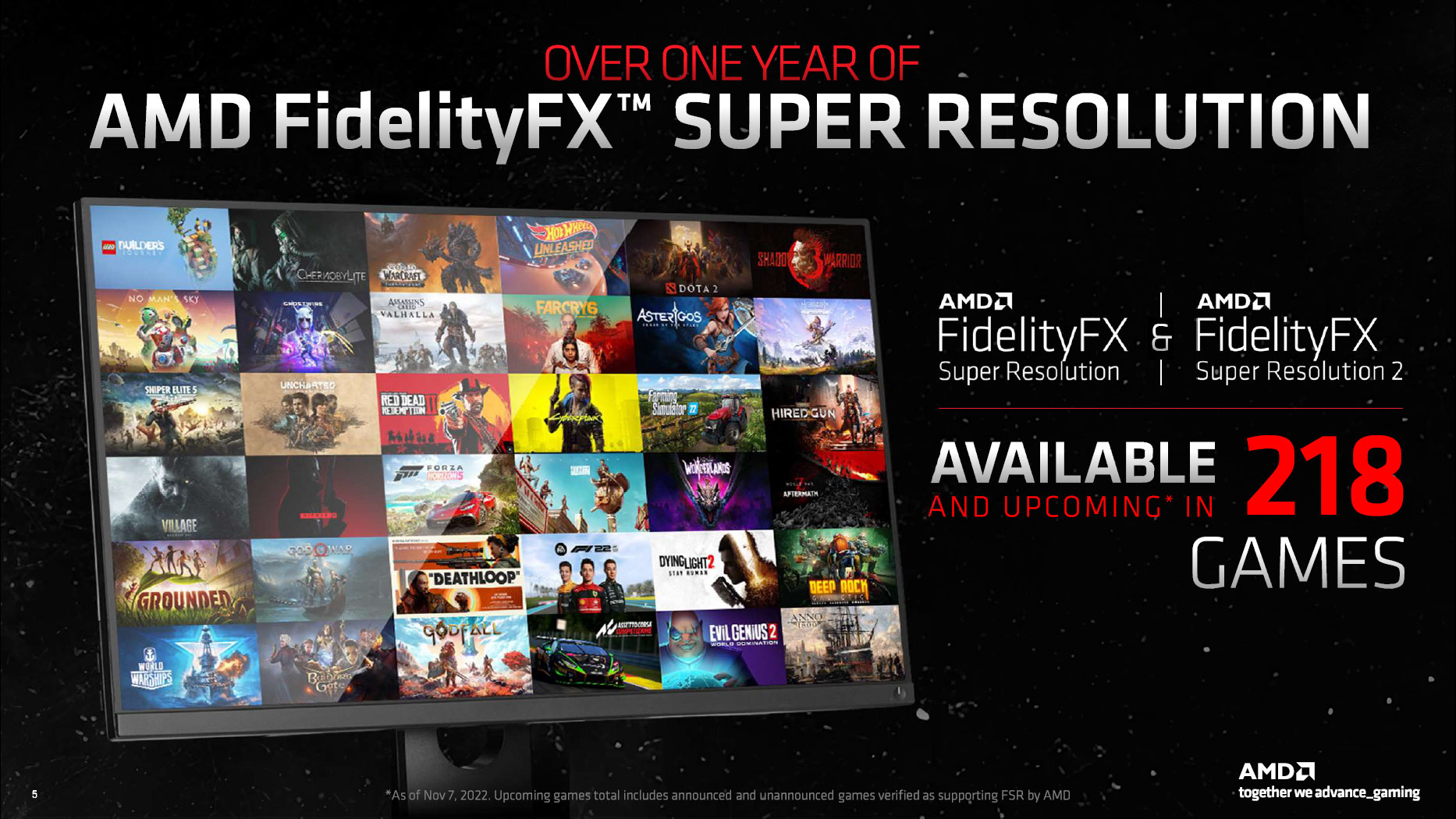
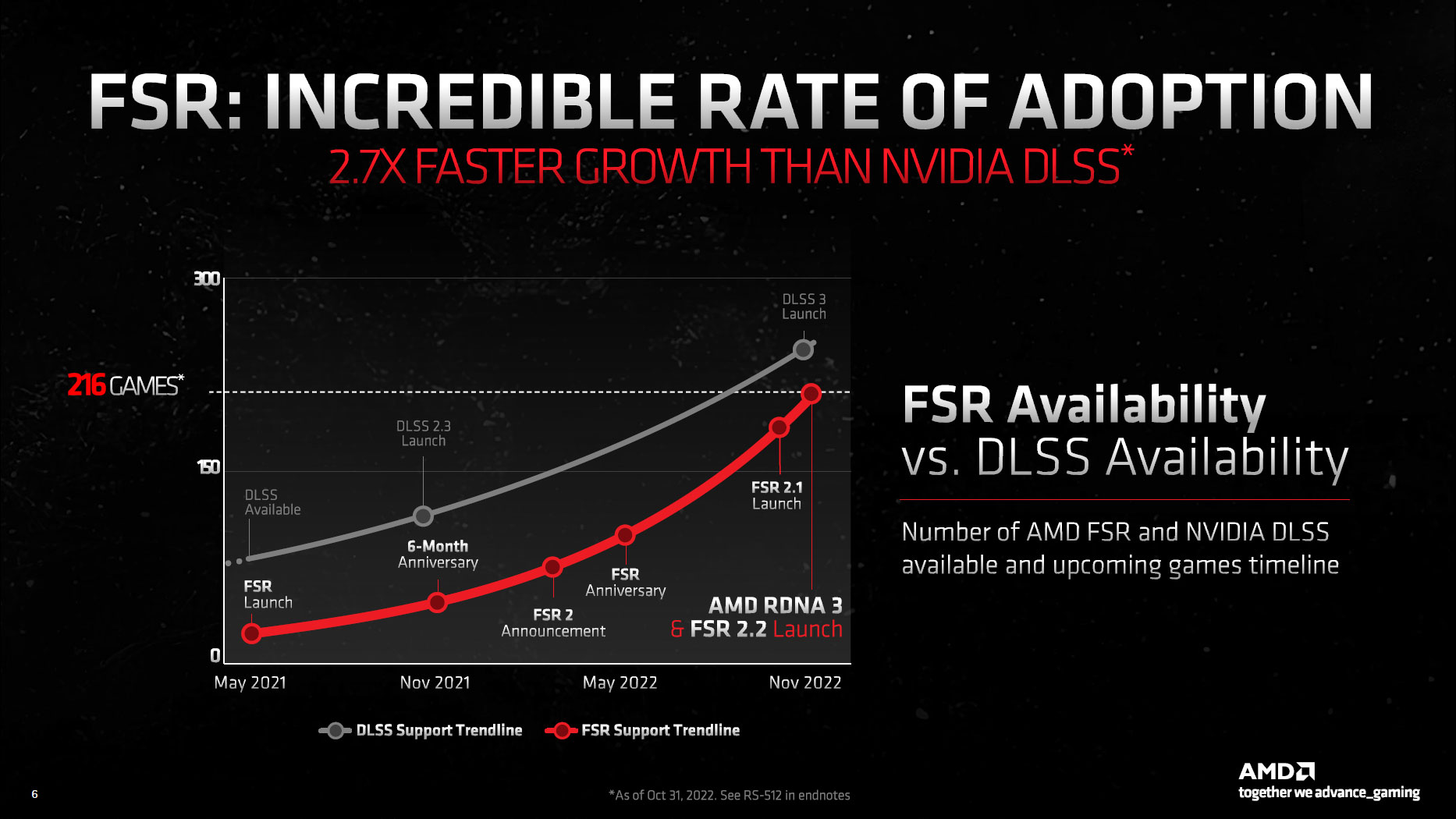


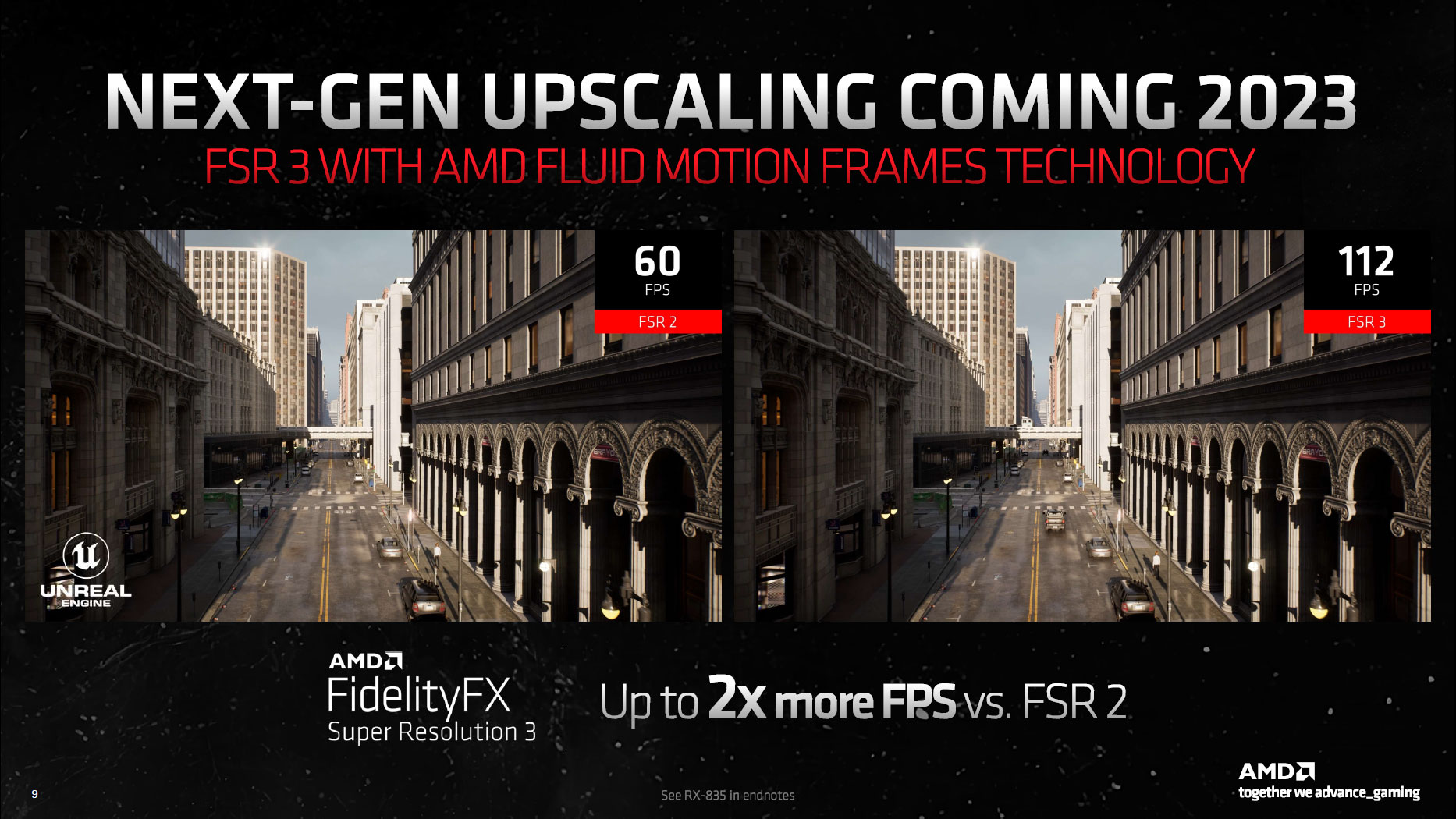
The core design of the AMD reference cards looks similar to what we saw with the RX 6900 XT and 6800 XT. You get three fans and a 2.5-slot card. Under the hood, however, there are plenty of updates. AMD says it focused its own designs on delivering higher performance per watt and efficiency — that's in contrast to the RTX 4090, which seems to have pushed well beyond the sweet spot in pursuit of higher potential performance.
AMD's 7900 XTX model does have a slightly higher 355W power limit than the 6950 XT's 335W, while the 7900 XT drops down to the same 300W TBP as the 6900 XT and 6800 XT models. Note that the above slides show the 7900 XTX, and the XT variant will have a slightly different PCB and cooler. Both will use dual 8-pin power connectors, and AMD was keen to point out that users won't have to deal with any adapters — melting or otherwise.
AMD will use a 14-layer PCB on the XTX card, with a 20-stage power delivery subsystem. The XTX and XT cards will also have two DisplayPort 2.1 outputs, a single HDMI 2.1, and a single USB Type-C connector that also supports DP2.1.
On the 7900 XTX, AMD will use a 10% larger vapor chamber (compared to the 6900 XT reference design), and it looks like the shroud and other materials will be slightly higher quality than before. We had some hands-on time with the two cards, and both felt solid and good.
One interesting change with the XTX card will be the addition of a fan intake temperature sensor located under the fan furthest from the IO ports. It's not clear if this is just for informational purposes or if the intake temperature will be used to help modulate fan speeds, but other software should also be able to use the sensor if desired. Both cards also have RGB lighting.
Radeon RX 7900 XTX/XT Performance Preview


AMD provided the above preview of the performance offered by the RX 7900 XTX and XT cards compared to the current RX 6950 XT. In rasterization performance, AMD shows 53% higher performance in Resident Evil Village, 51% more performance in Call of Duty, 67% gains in Cyberpunk 2077, and 47% higher framerates in Watch Dogs Legion.
Ray tracing performance potentially sees even higher gains, though he have both FSR and native performance to consider. Here Resident Evil with maximum RT settings ran 44% faster at native, and 38% faster with FSR. Dying Light 2, using the High RT setting, was twice as fast at native and 85% faster with FSR. Cyberpunk shows gains of 48% with FSR, and 62% at native, and lastly, Hitman 3 with Ultra RT was 65% faster at native and 56% faster with FSR. However, native 4K performance fell into the unplayable range on Dying Light 2 and Cyberpunk 2077,
It's also worth mentioning that Nvidia's RTX 4090 delivers 44 fps at native in our Cyberpunk testing, while the RTX 3090 Ti scored 24.6 fps. In other words, at least in the most complex ray tracing games, it looks like AMD's new 7900 XTX at native 4K will deliver similar performance to Nvidia's fastest previous generation Ampere GPU.
What we don't know (yet… soon!) is how the RTX 4080 performs. We've seen a few benchmarks from Nvidia, but as with AMD's tests, we need to consider the source. Considering the massive boost in raw compute, gains of 50% on average in rasterization testing aren't particularly impressive. That's likely due to the architectural changes, where a lot of the theoretical compute performance doesn't always directly translate into higher performance.
We've covered a lot of the other material in our other AMD articles for this morning, so be sure to check those out for additional details. The full Radeon 7900 series slide deck is below for those who want to view additional content.
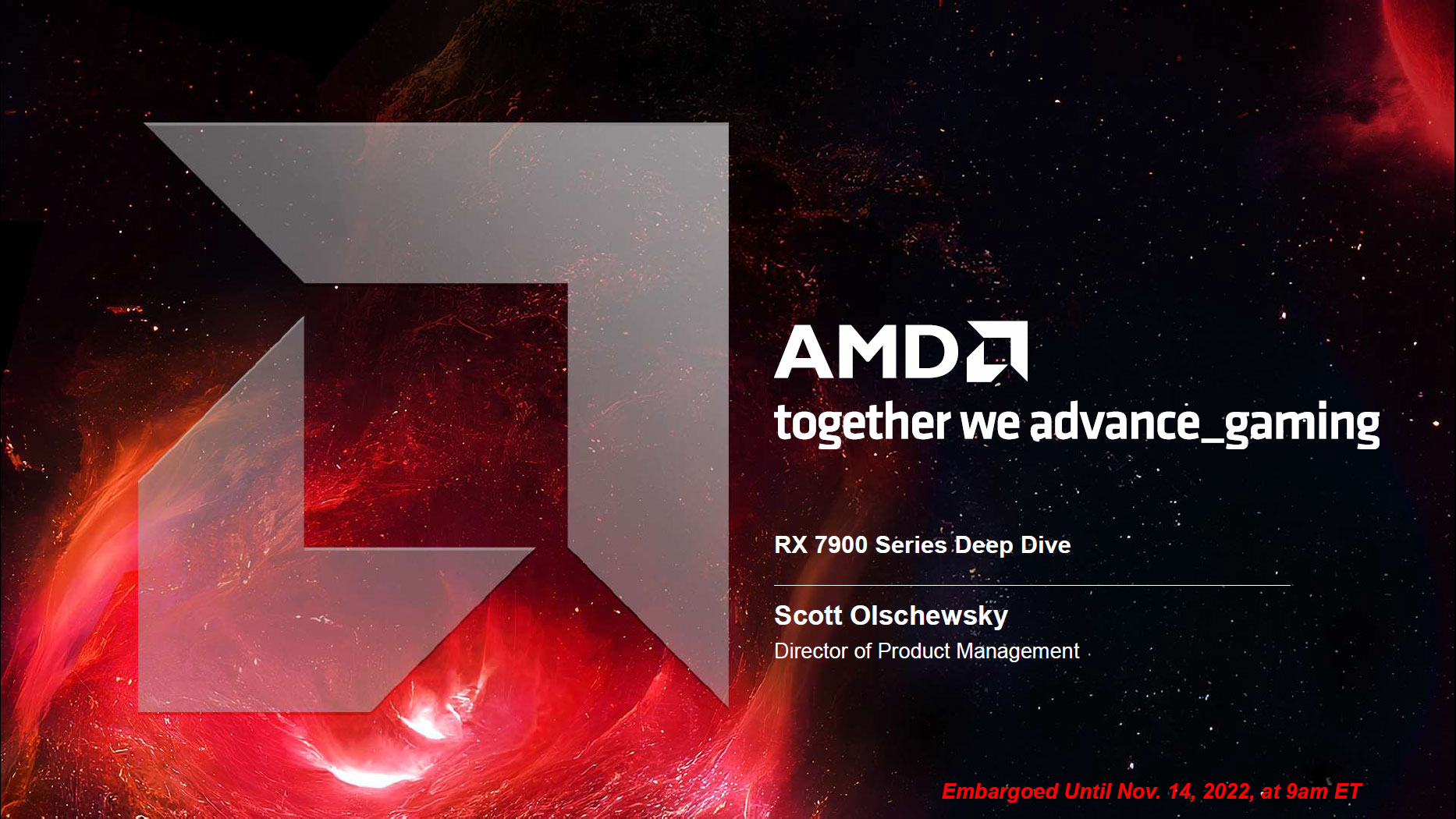
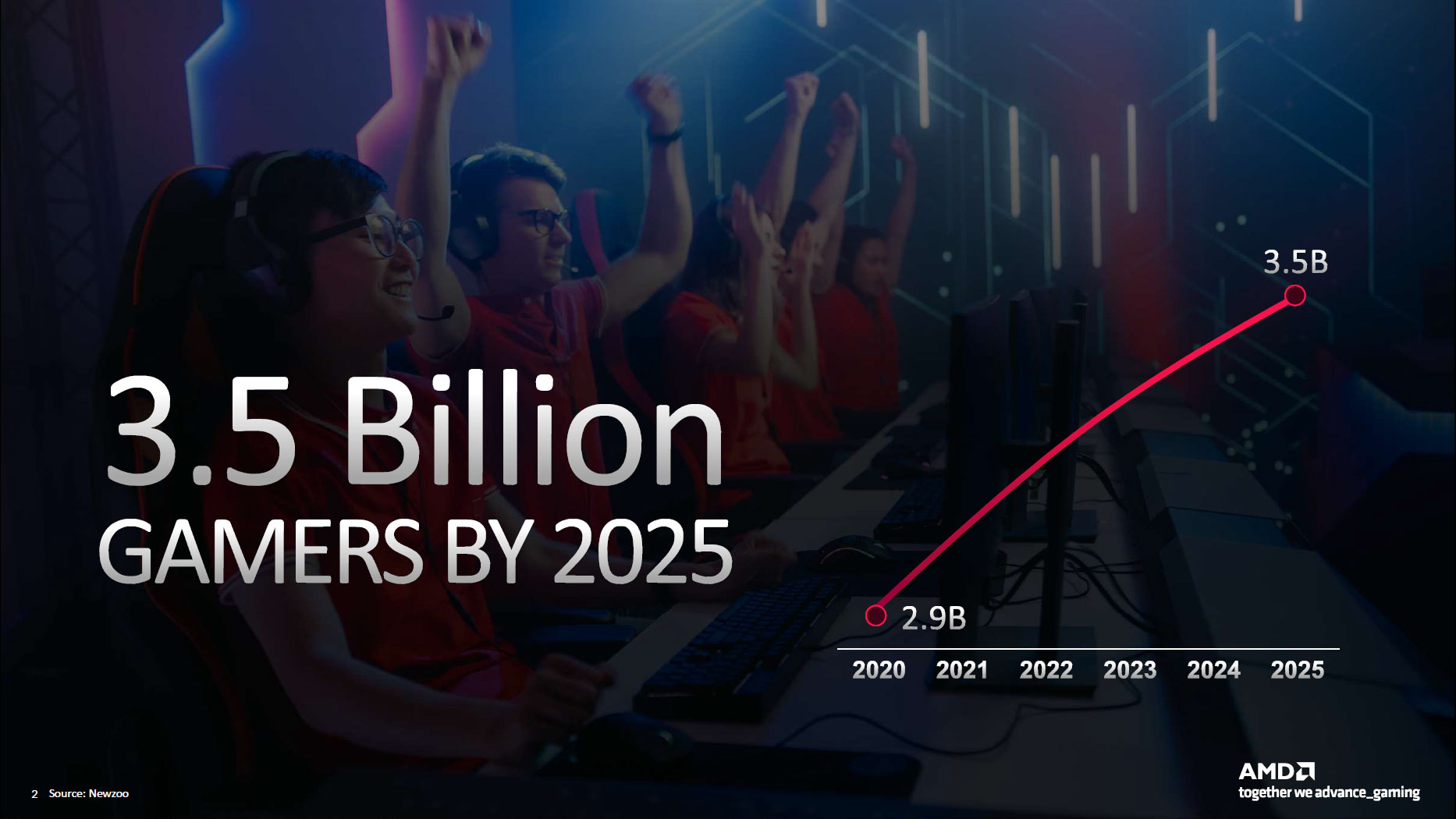
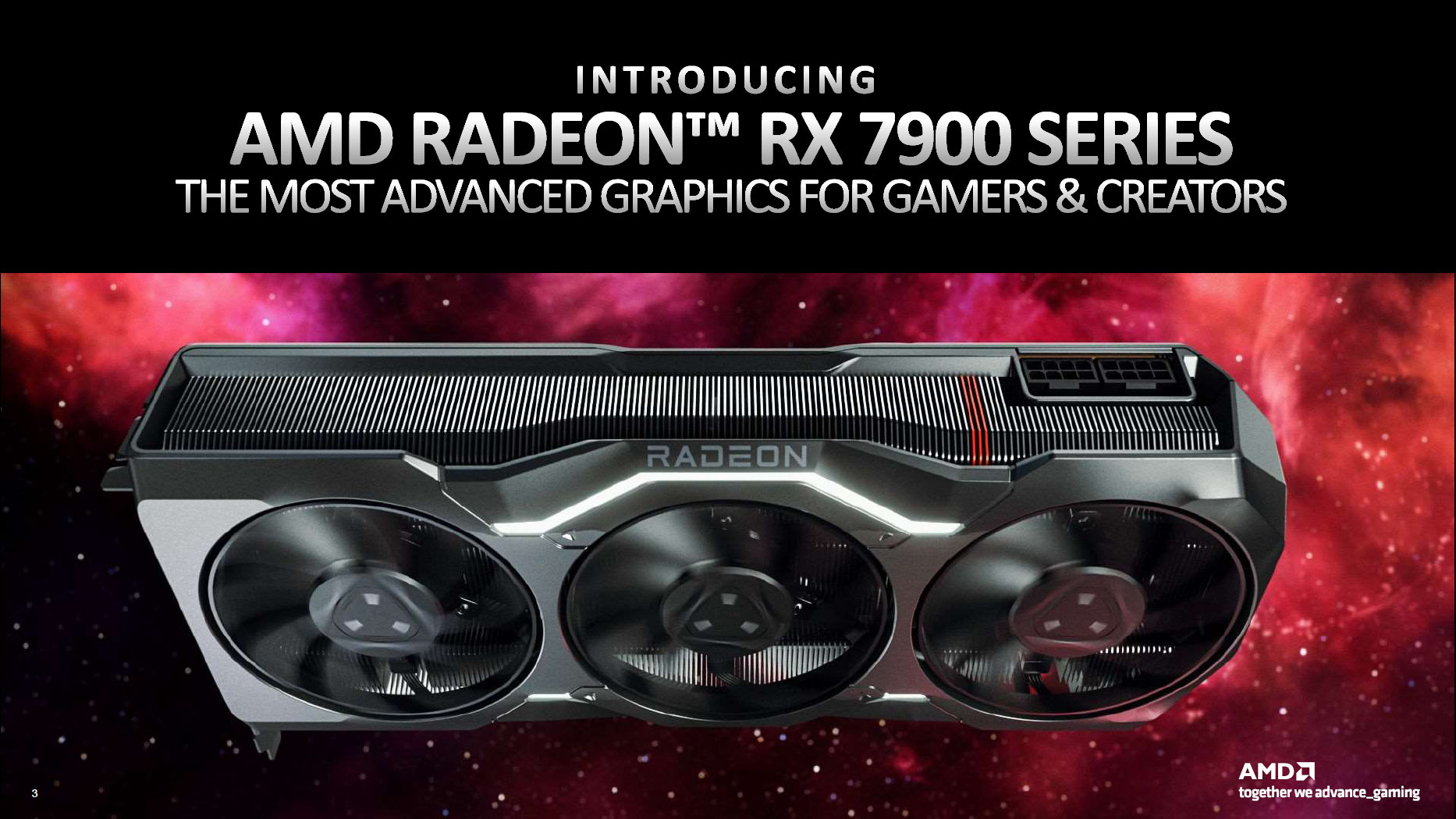

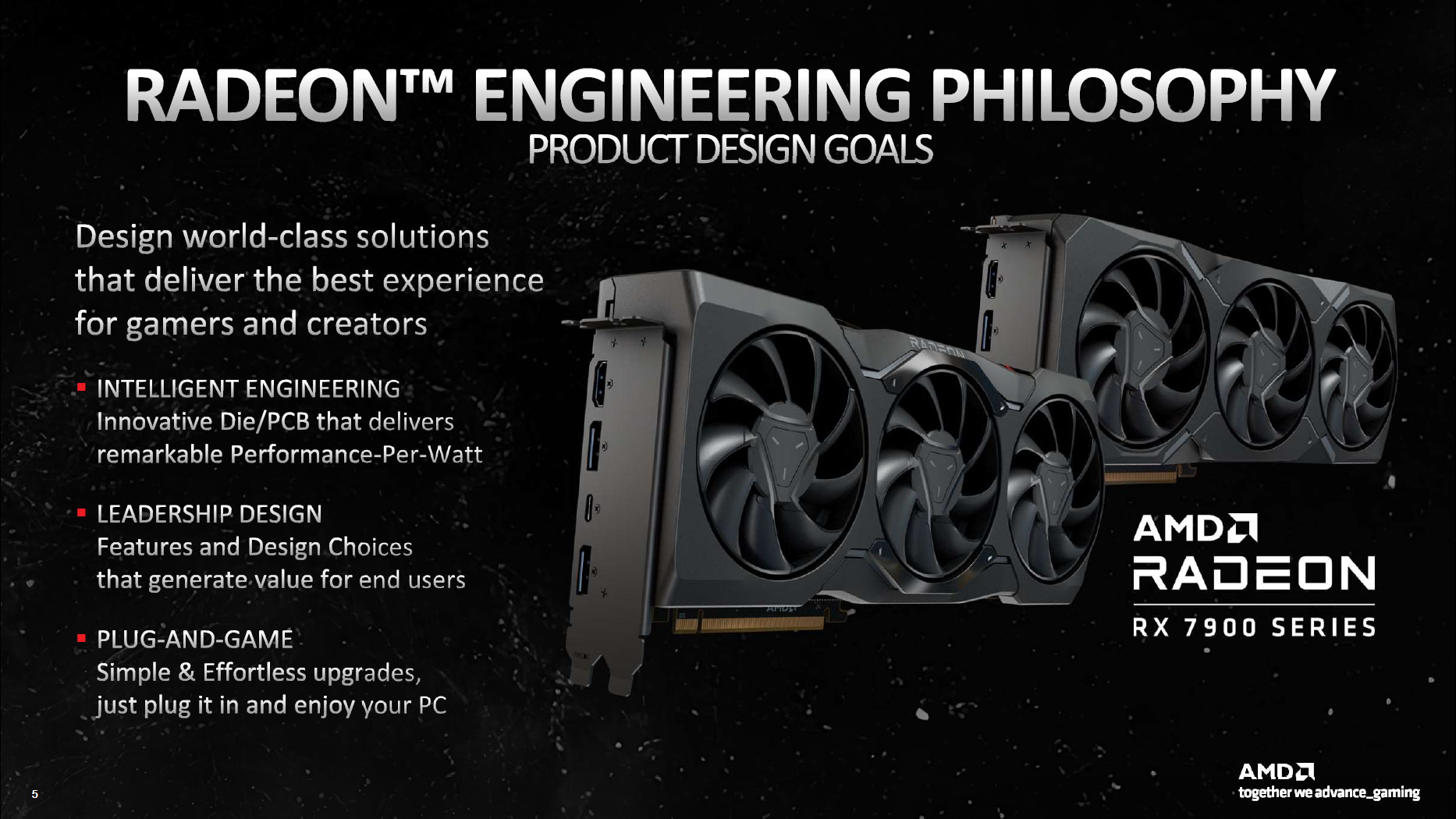
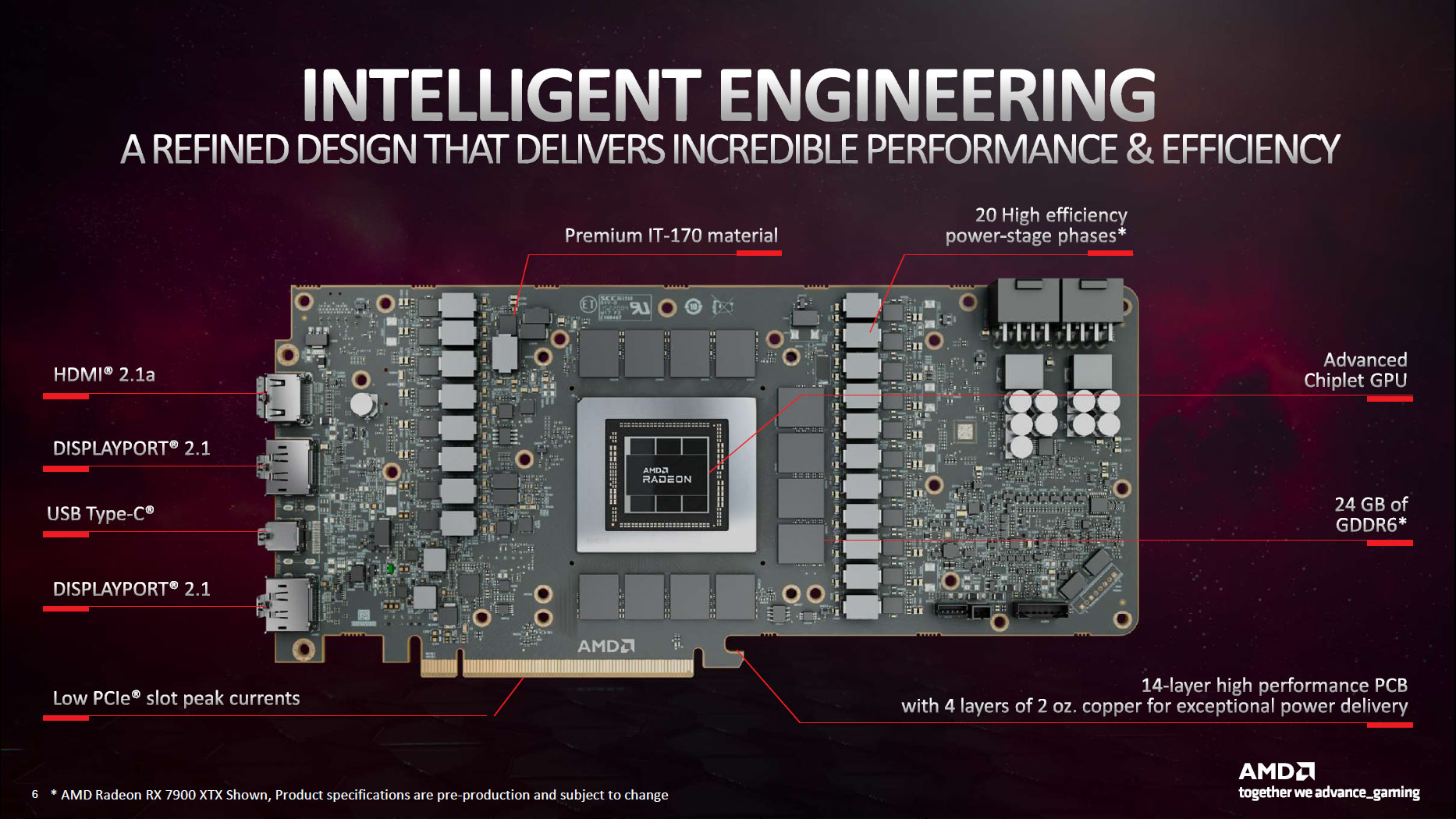
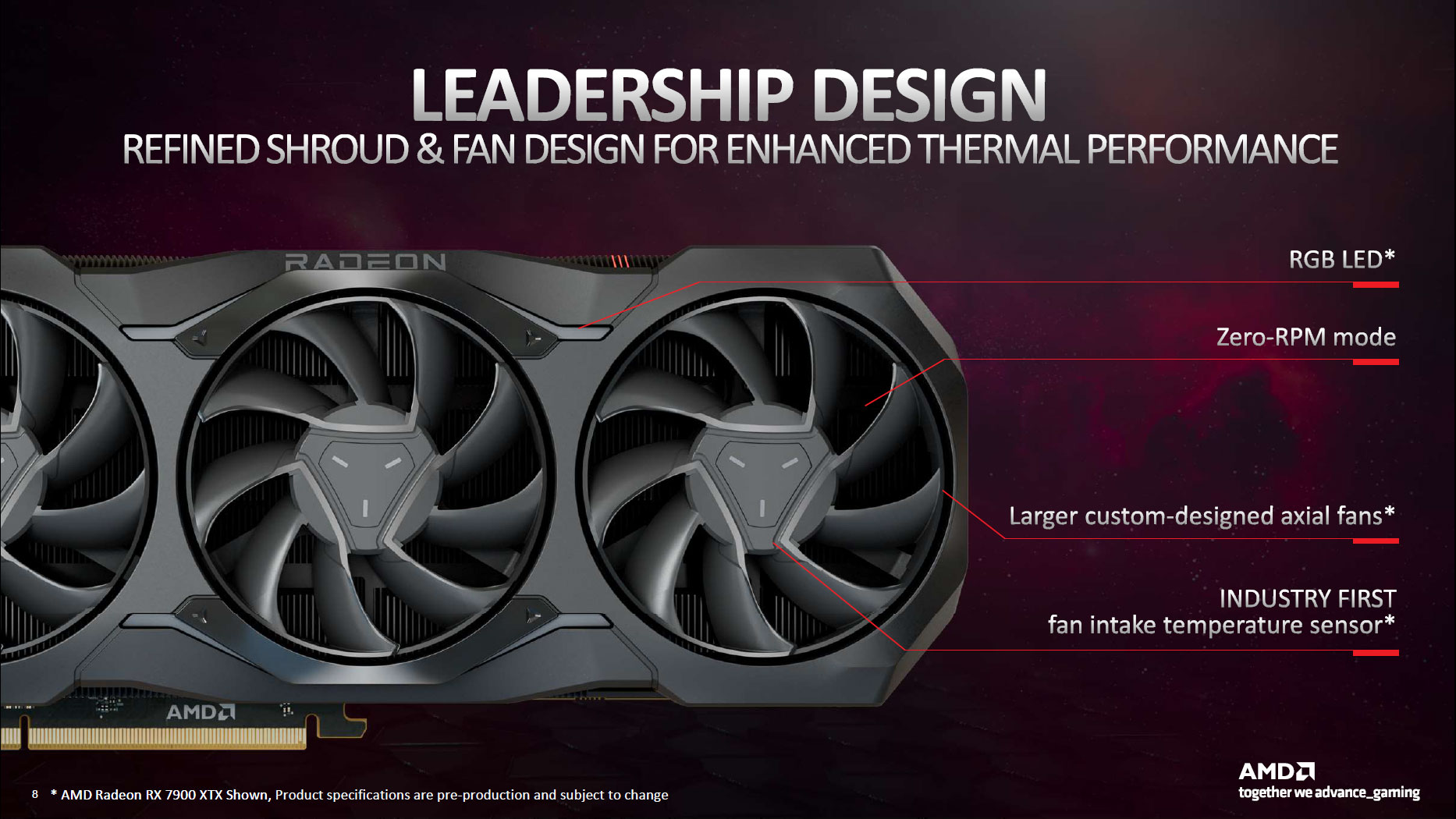

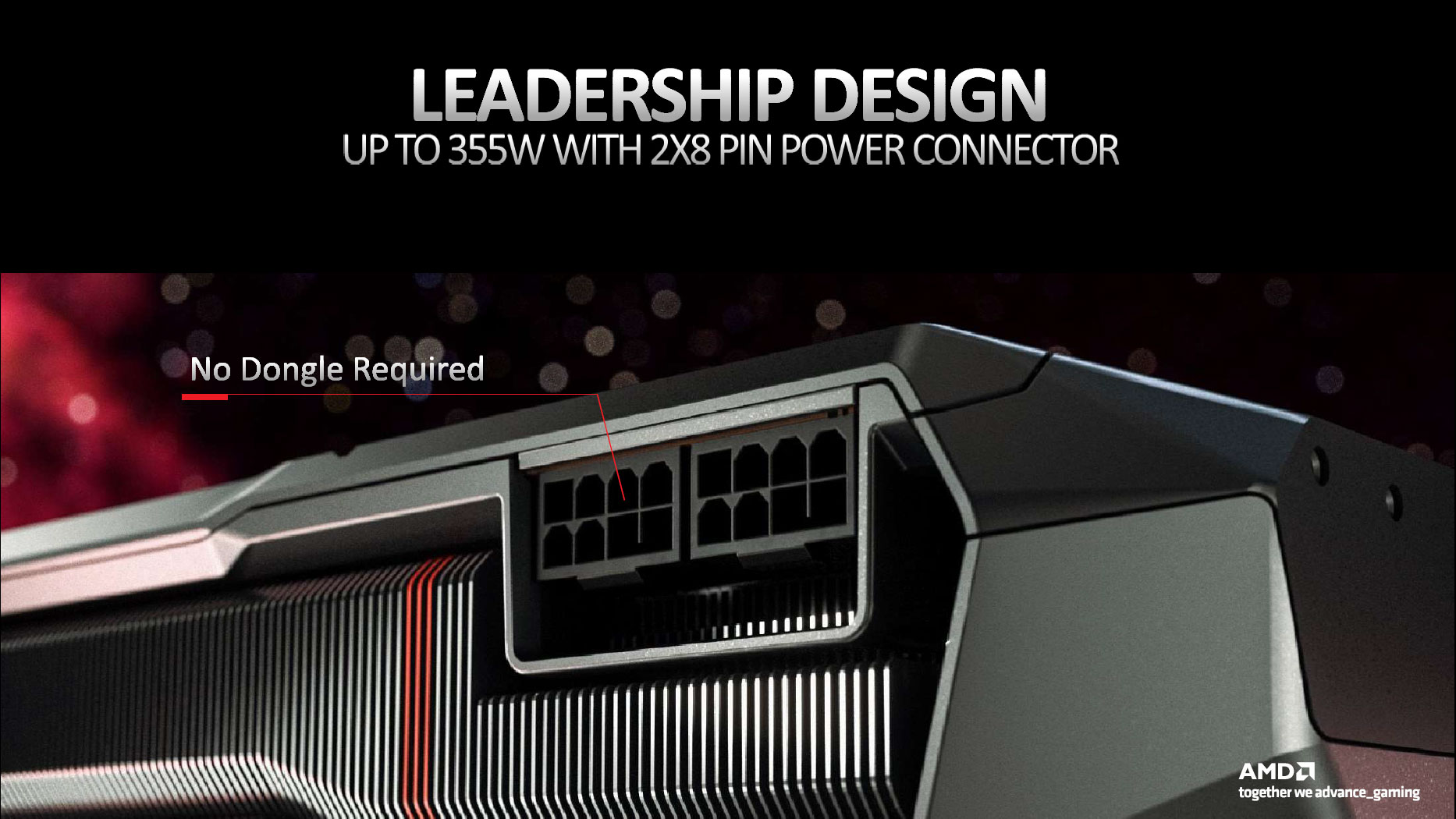
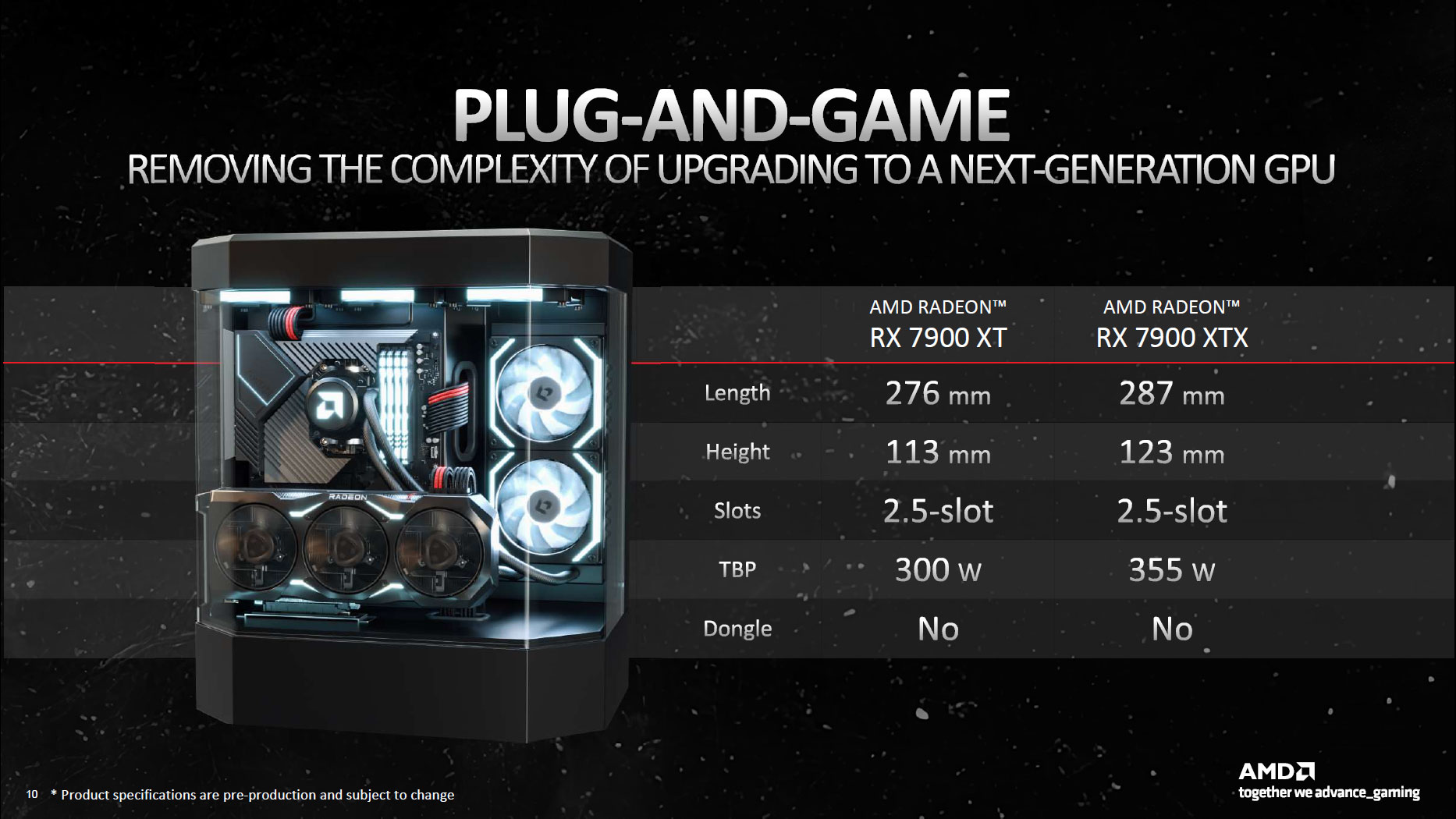

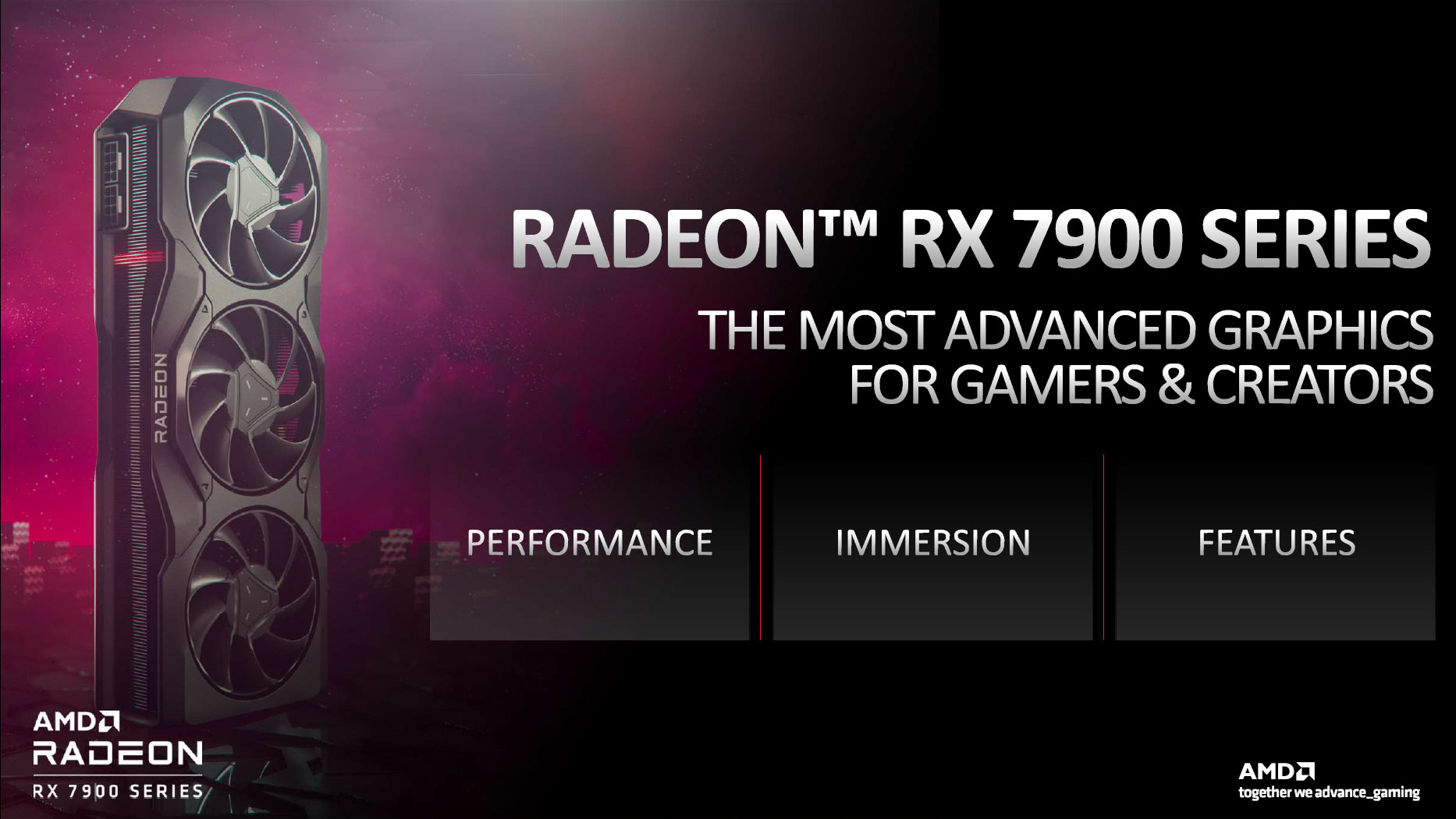
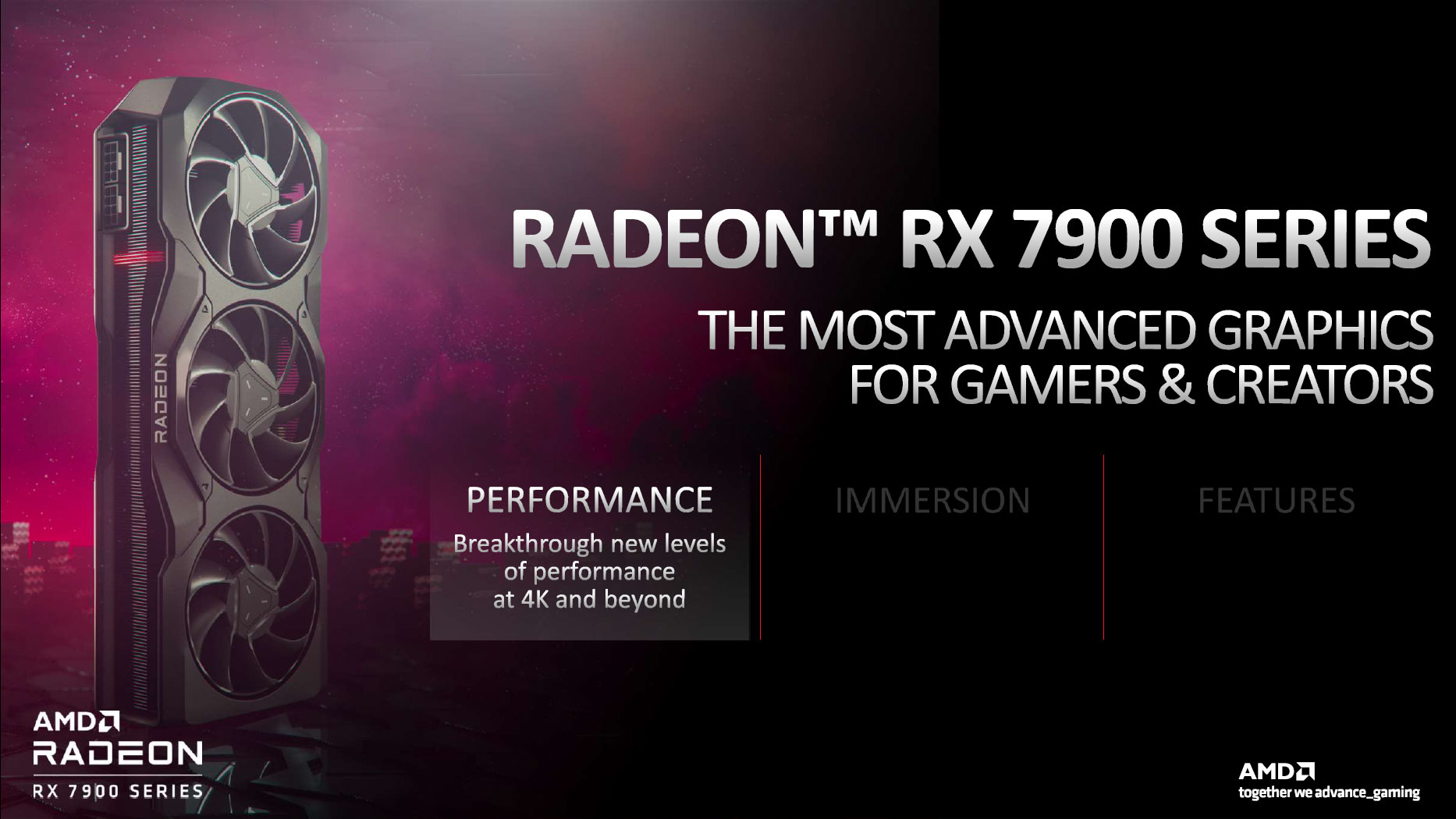
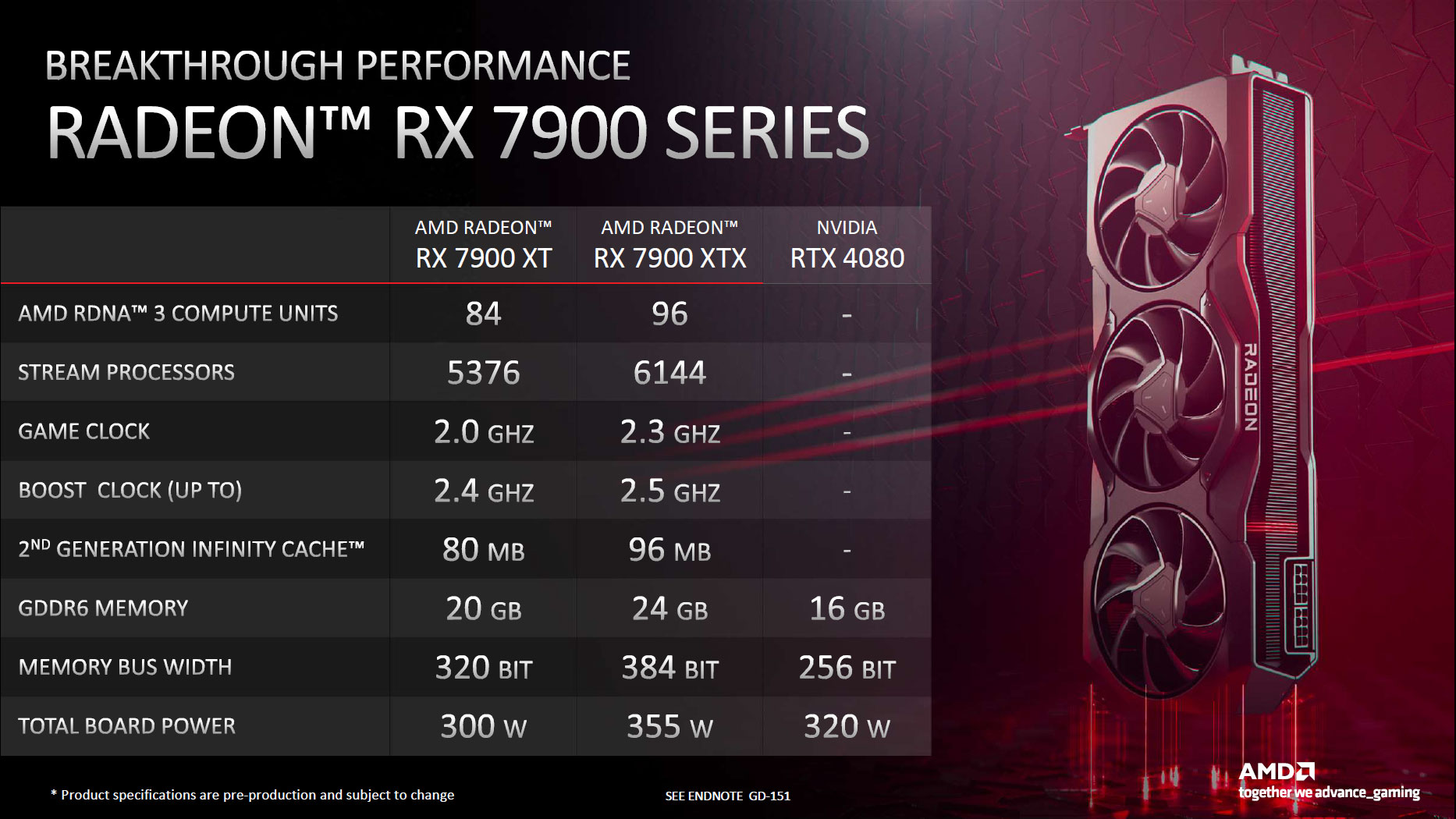


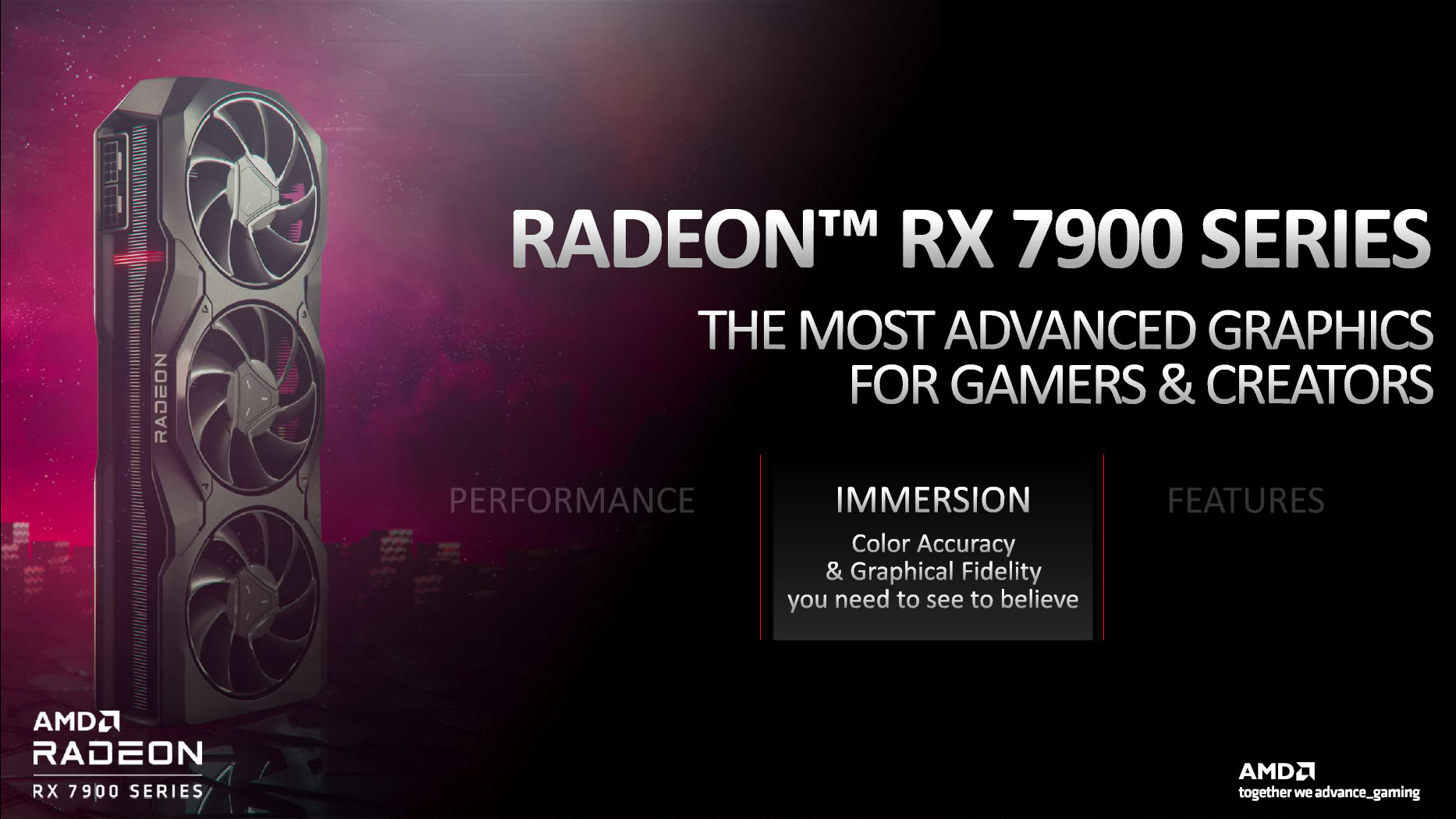
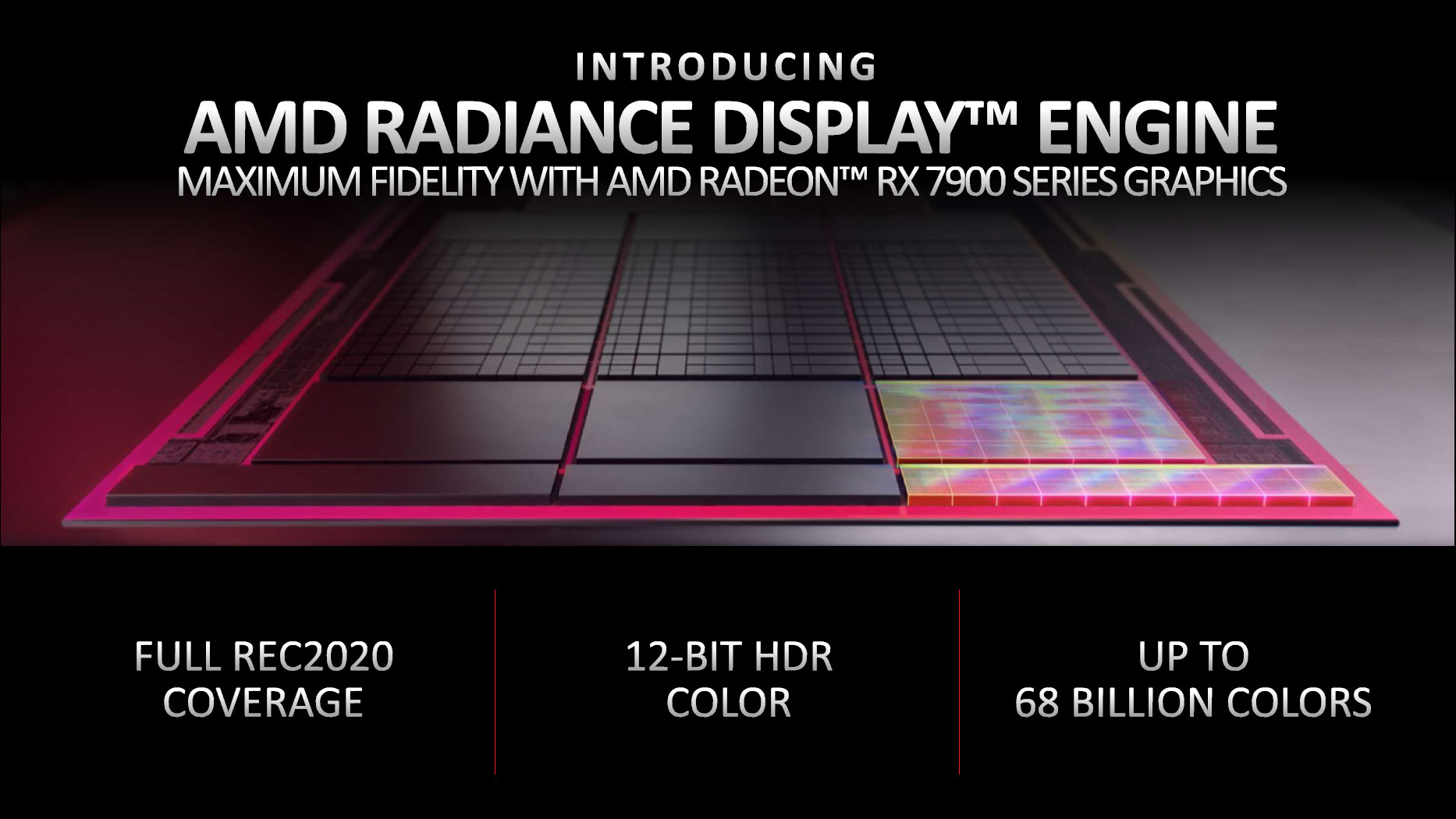
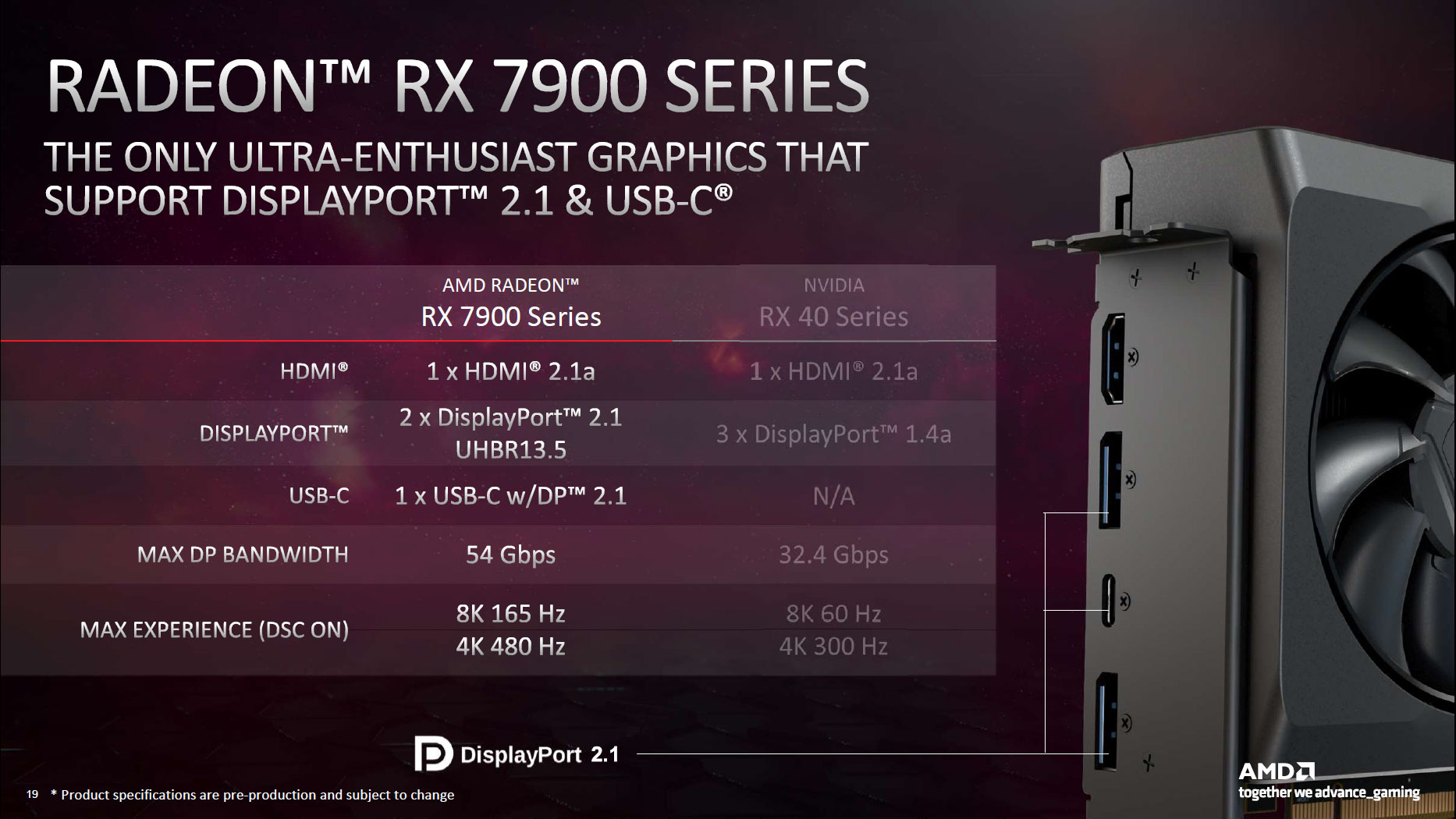
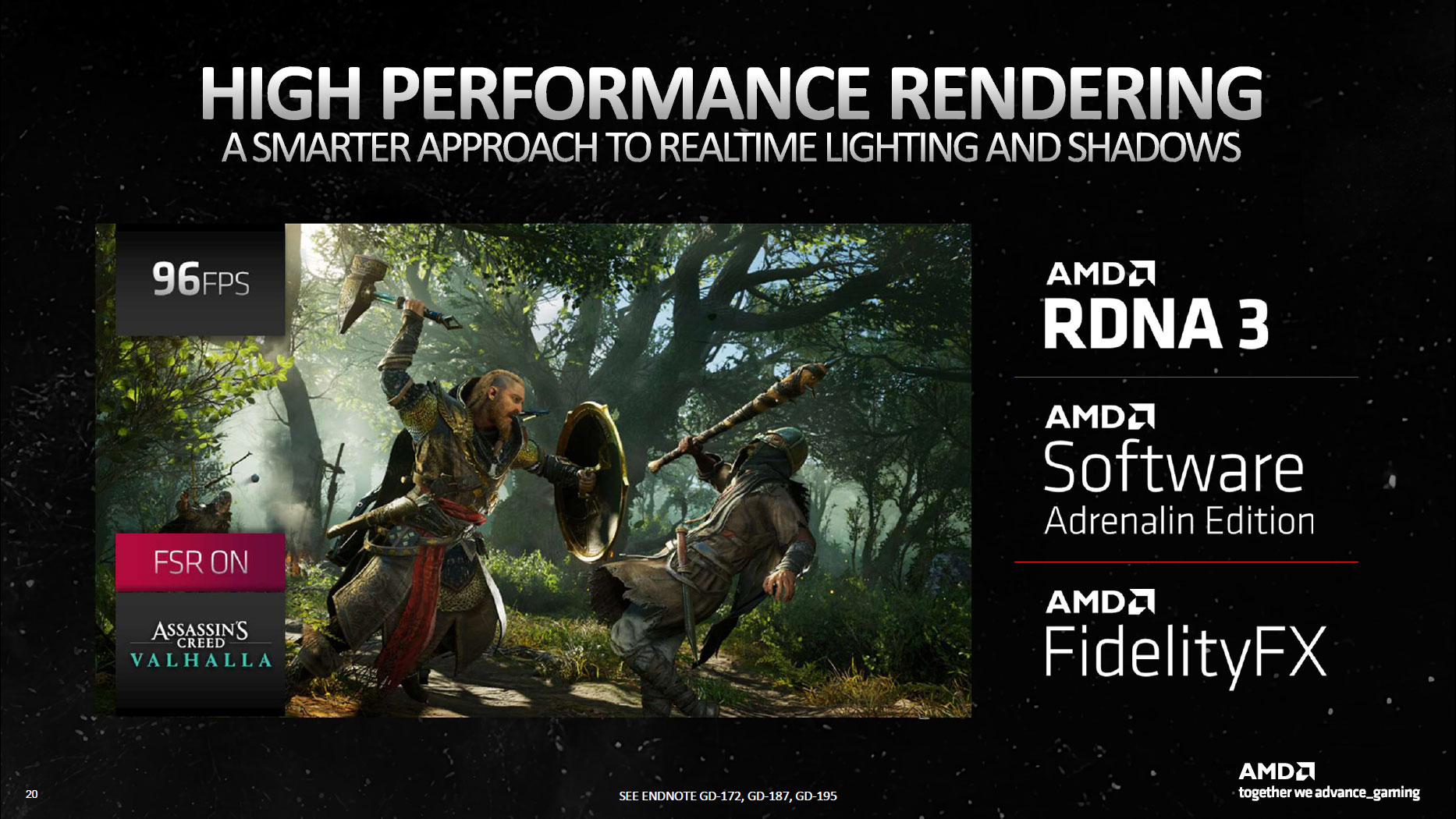


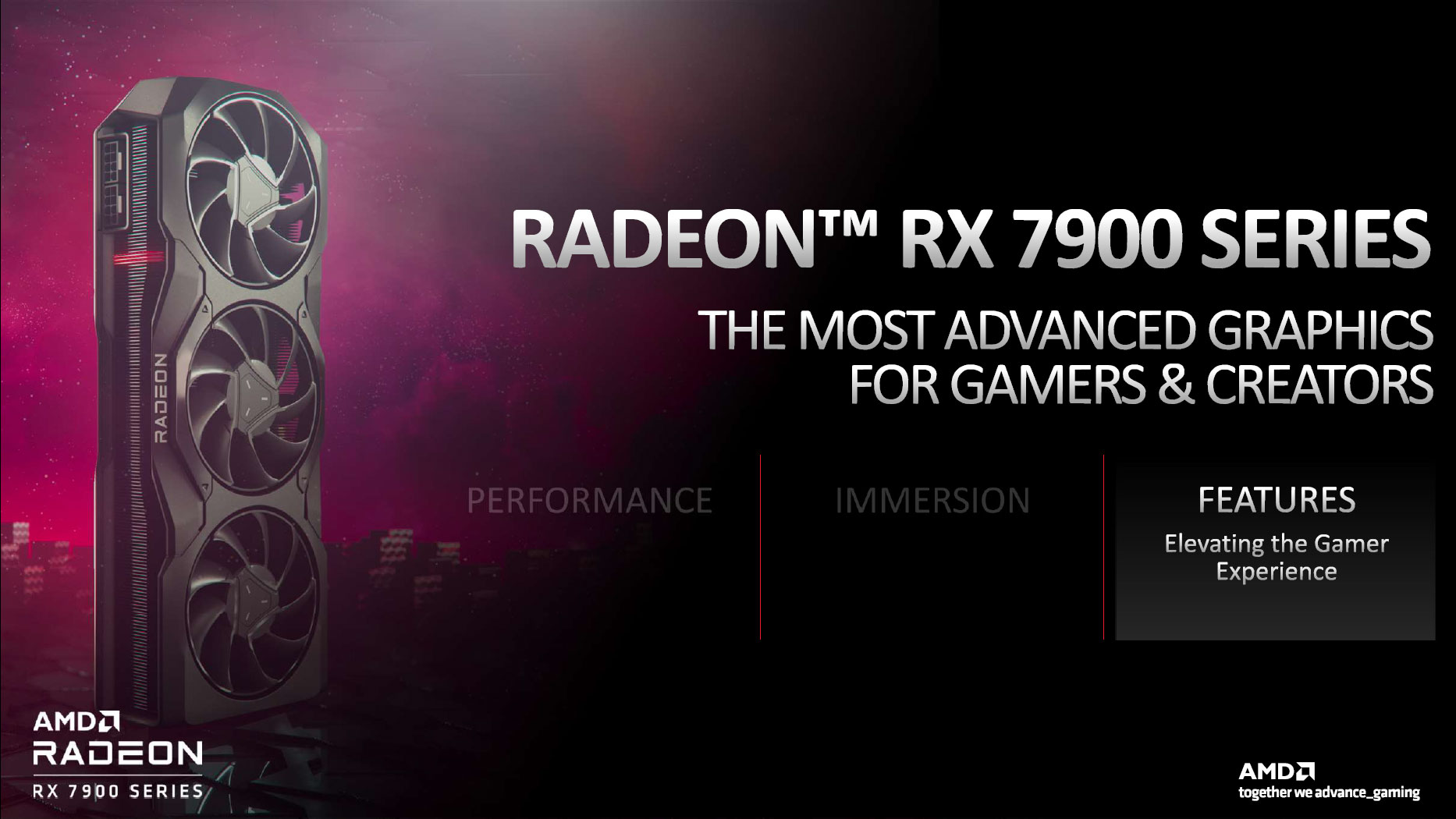
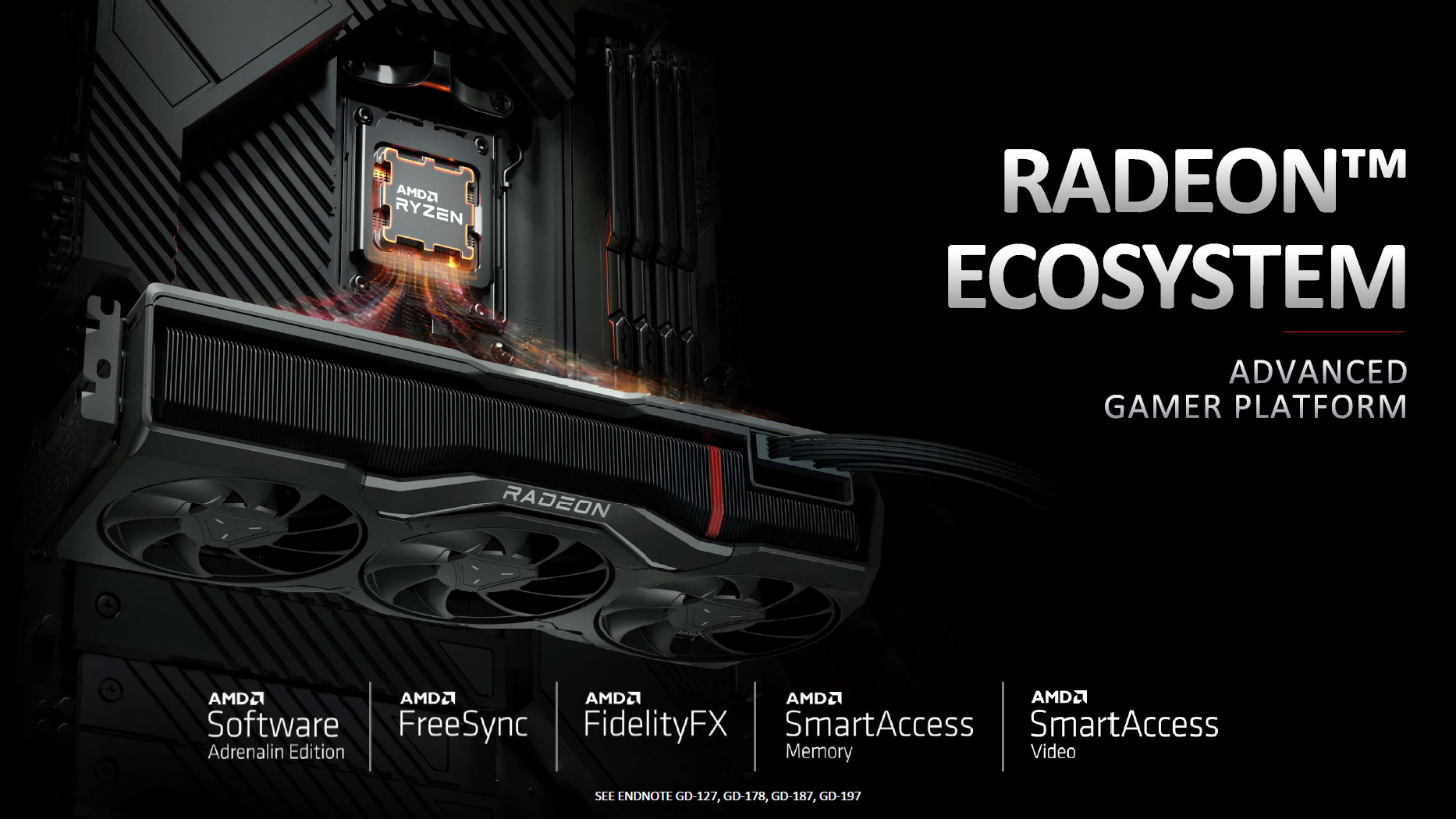

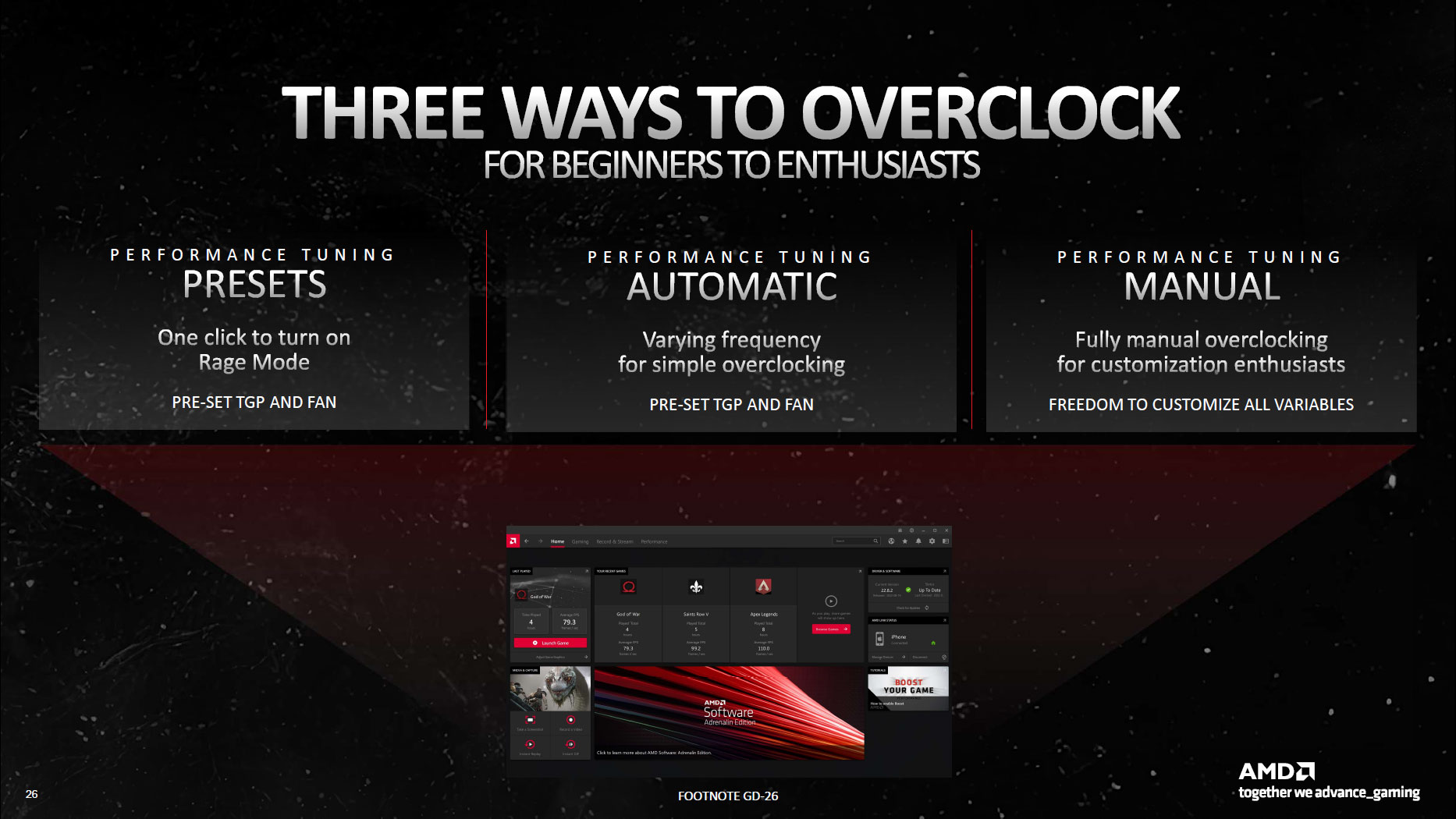

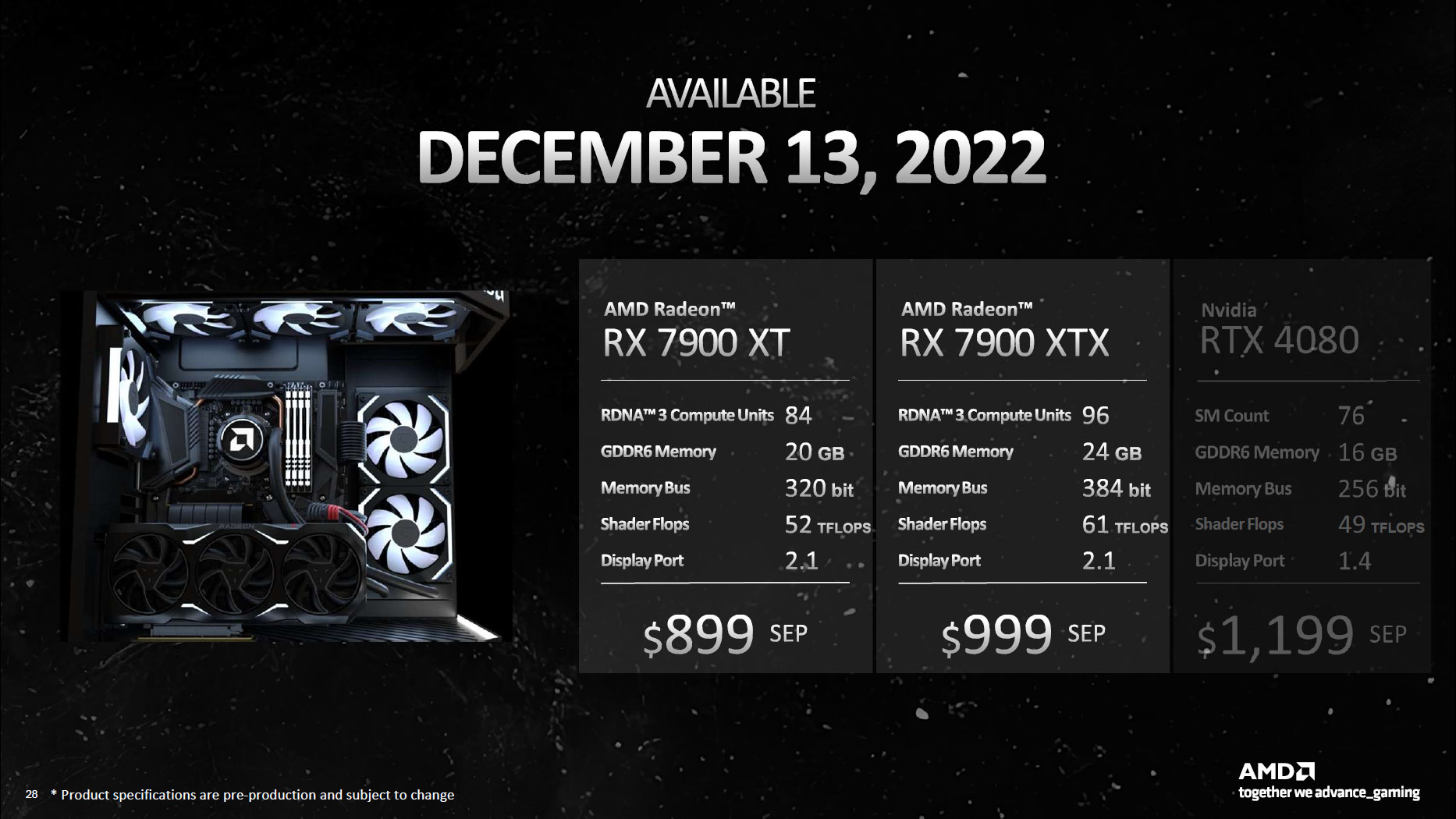
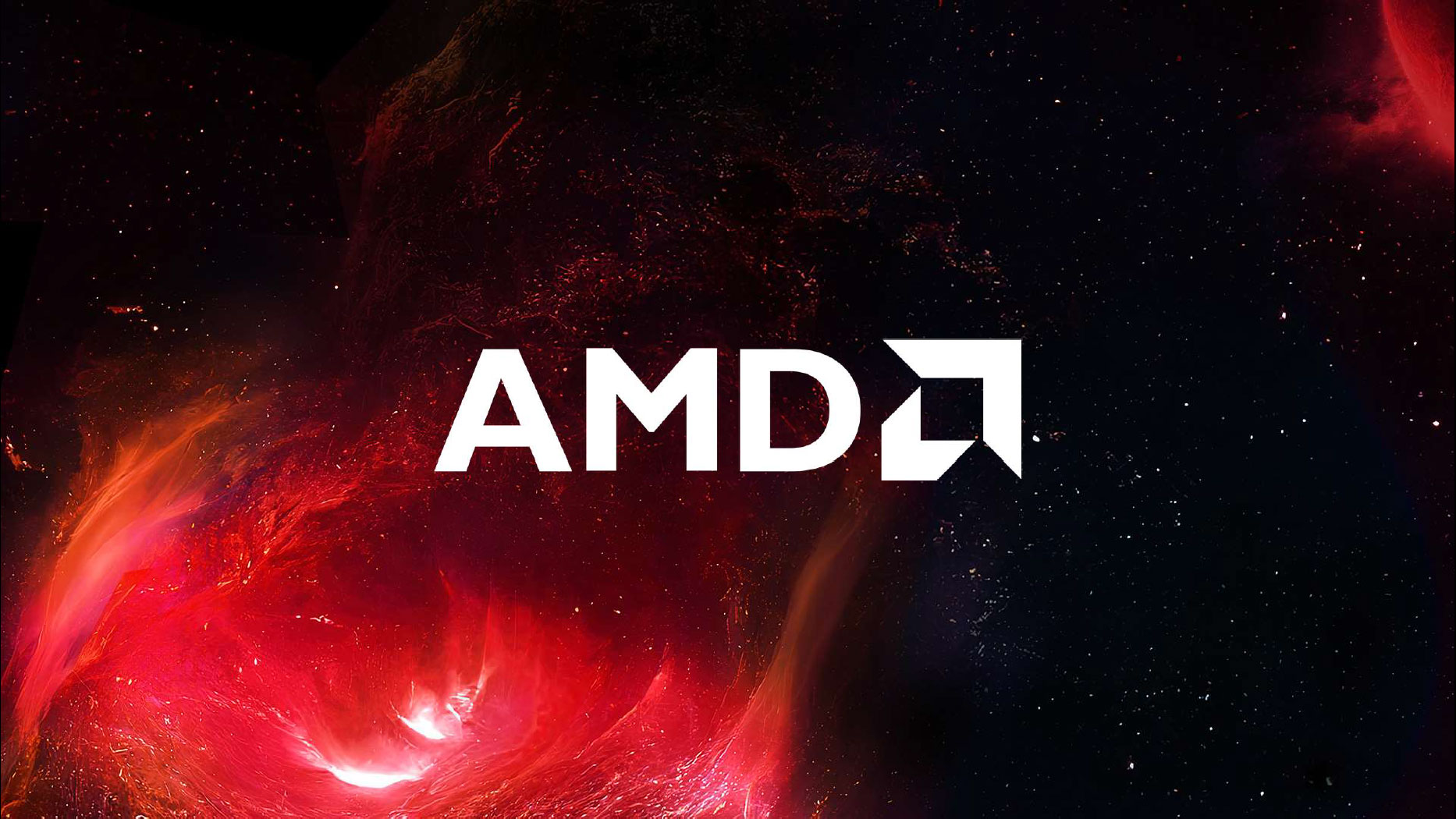


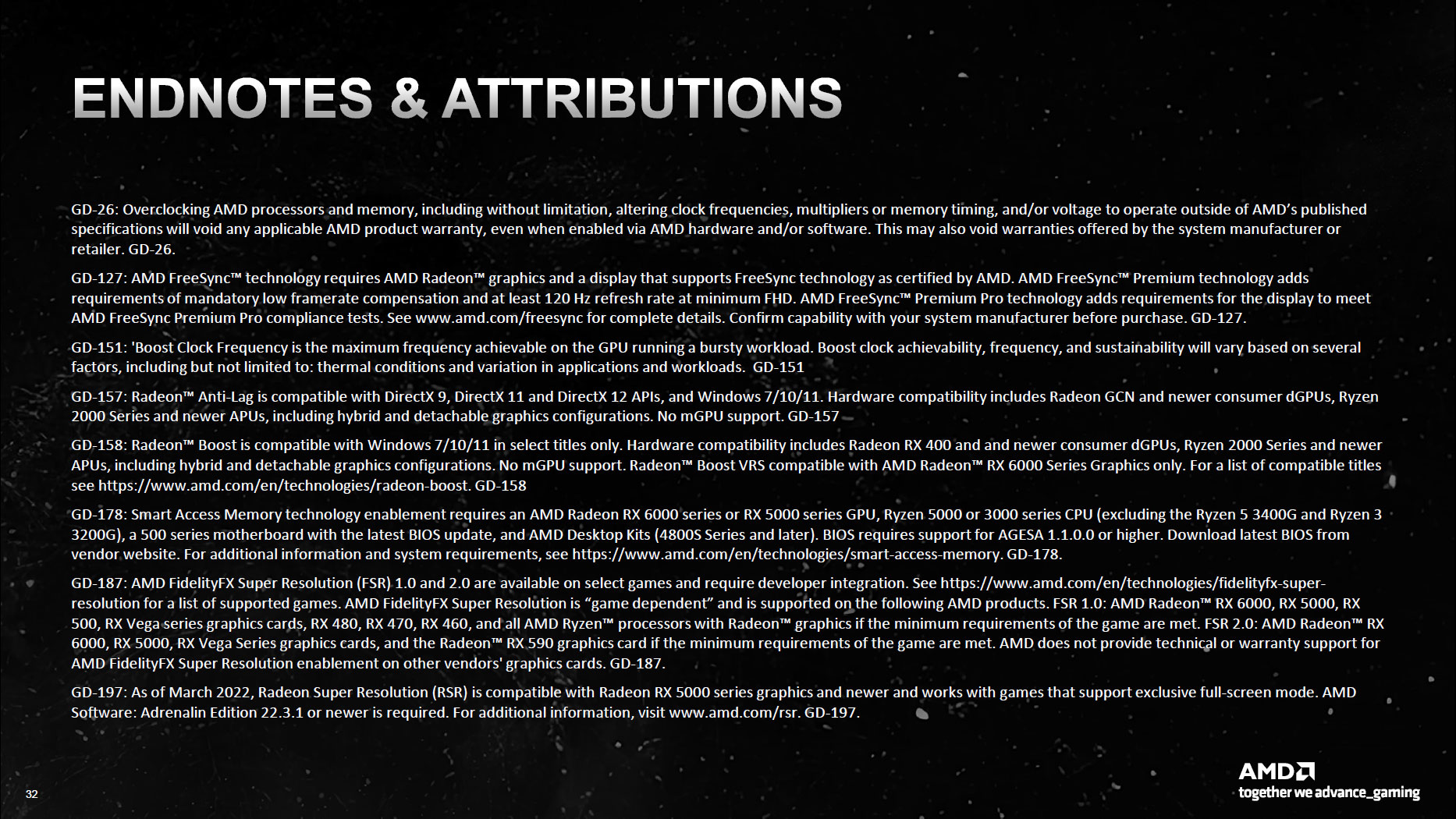
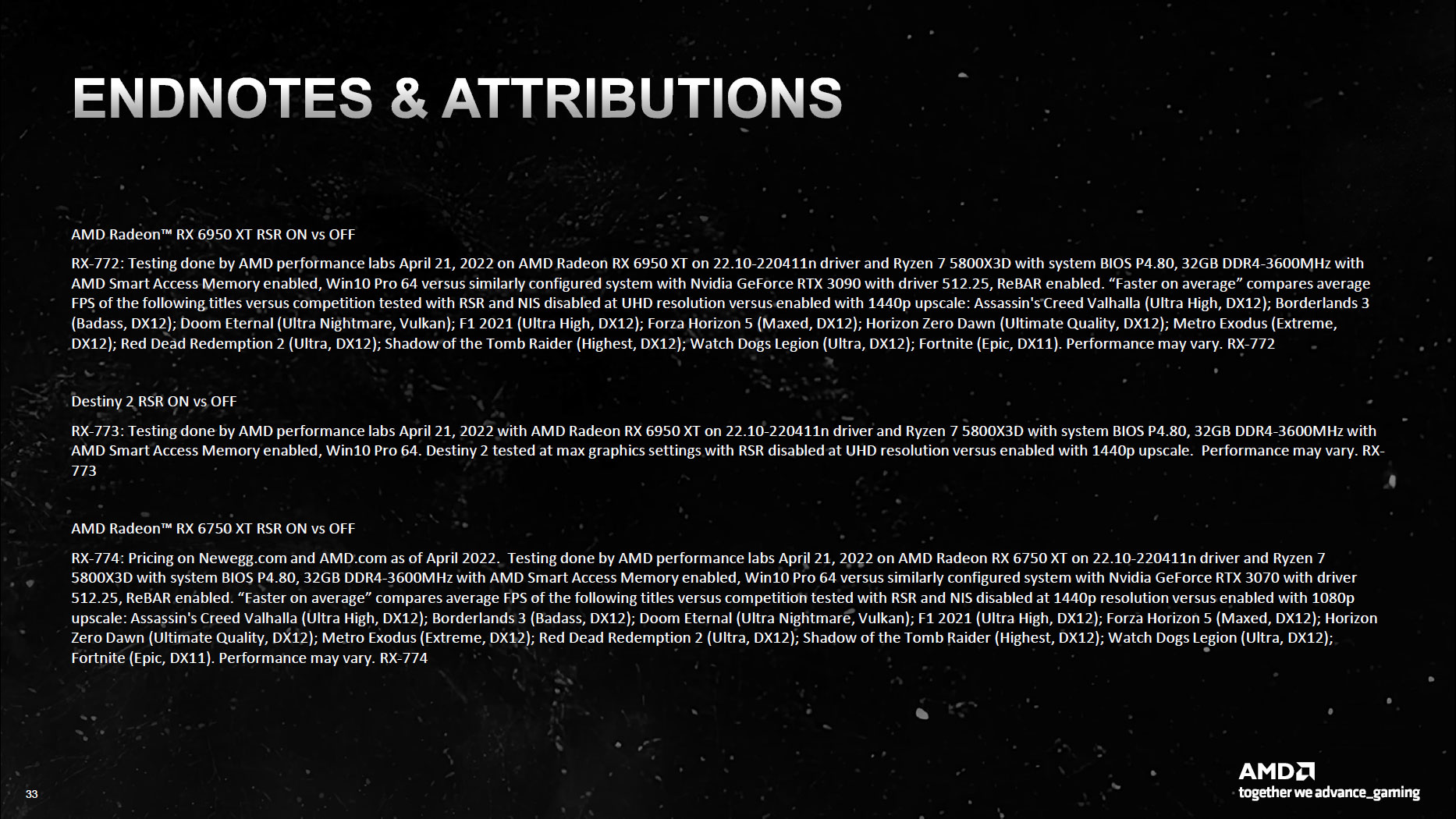
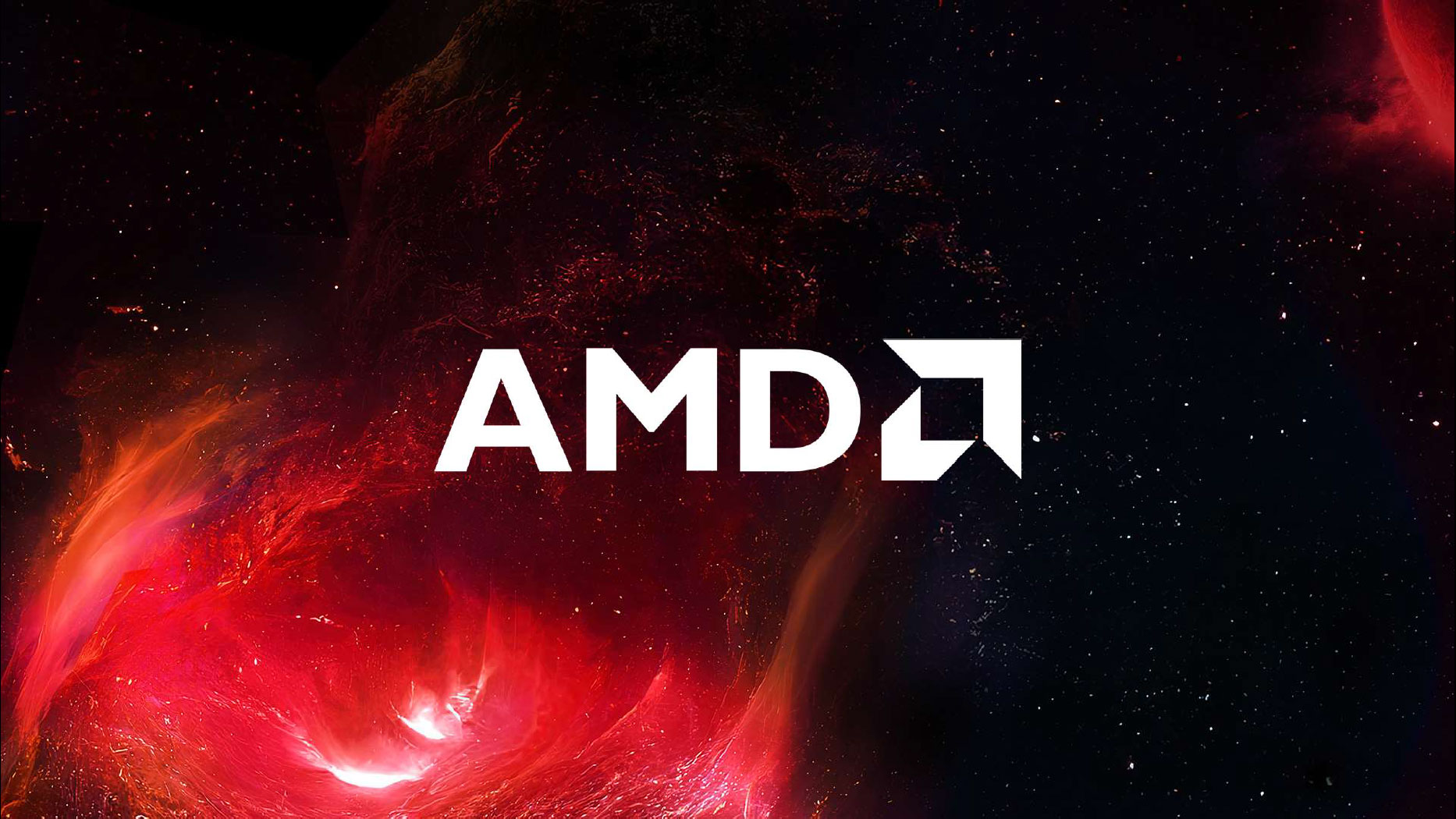
- MORE: Best Graphics Cards
- MORE: GPU Benchmarks and Hierarchy
- MORE: All Graphics Content
Get Tom's Hardware's best news and in-depth reviews, straight to your inbox.

Jarred Walton is a senior editor at Tom's Hardware focusing on everything GPU. He has been working as a tech journalist since 2004, writing for AnandTech, Maximum PC, and PC Gamer. From the first S3 Virge '3D decelerators' to today's GPUs, Jarred keeps up with all the latest graphics trends and is the one to ask about game performance.